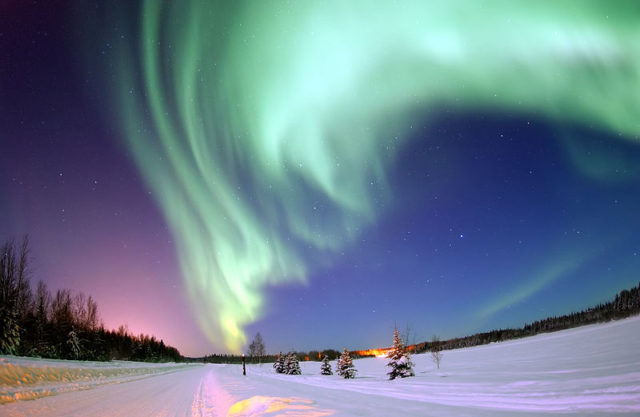Aurora borealis and Aurora australis, also known as the Northern and Southern lights, are amazing displays of light in the sky, most often seen towards the polar regions. The colour displays range from green, to reds to purples and vary from small wisps to large dramatic streaks through the sky.
To understand how these light displays happen we need to understand a little about solar winds. The surface of the sun is constantly bubbling and boiling. Sometimes particles of plasma are released from the sun’s surface at areas called sun spots. This plasma escapes the pull of the sun’s magnetic field and is released into space as solar winds.
These solar winds can travel to Earth where they are attracted to the Earth’s magnetic fields, particularly at the north and south poles. When particles from the solar winds enter the Earth’s atmosphere they collide with particles of oxygen and nitrogen giving off these wonderful displays of colour.
The colour of the Auroras depends on the particles that interact with the solar wind and their altitude. Green and yellow colours are typically associated with collisions with oxygen, while red, violet or blue colours result from interactions with nitrogen. While these displays are best seen in regions closer to the poles we are sometimes lucky enough to catch site of them right here in the skies over Ireland.
Have you ever seen them? Next time you hear of a lot of solar flares it might be worth remembering to look to the skies in the hope of catching these spectacular light shows.

I managed to catch aurora last month in Norway. It was an incredible experience, but came with a lot of hard work and perseverance. I arrived in Lofoten Islands and it began to snow heavily with clouds covering the sky. Knowing that my chance is really slim, I headed out anyway to find an open, clear skies and after two hour of hikes, I saw it! Really beautiful sight, especially as the setting was in a dramatic range of mountains rising from a fjord. =)
Sounds beautiful Andrew, fair play to you for your persistence! I bet it looked extra special after the long hike.
This is so cool. I had no idea it was about solar plasma and solar winds. Kids were suitably impressed when for once I actually came back with an answer 🙂
Glad I could be of help 🙂 Its always nice to see a fellow mum getting some rare appreciation 😉